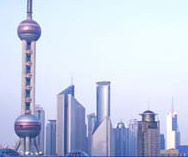From machine tools to computer parts to home furnishings, companies in the U.S. and
Western Europe see China as the producer of choice for components or finished goods.Among low-cost countries, China’s industrial output is the largest — and it’s growing the fastest. What makes China so attractive, and how should companies choose the right sourcing locations for different parts of their value chain? Experts from Wharton and BCG offer some advice for corporate decision makers.

Sign up to stay informed about our latest article releases.